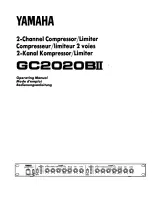
10
Air Leaks
Air leaks are costly, your compressor uses a lot of energy to ensure that a constant storage of high-pressure air is available
to perform work.
• If air leaks are detected, rectify the problem as soon as possible.
• If a detected air leak is potentially dangerous, isolate the area and attend to it immediately.
Vibration
Vibration is a characteristic of all reciprocating machines. It can be held to a minimum by keeping the compressor securely
fastened to a solid level foundation. Isolating vibration pads should only be used with Engineering approval.
• Maintain proper belt alignment
• Keep nuts and bolts tight
Overheating
The compression of air generates heat, much of which is dissipated as cooling air passes over the cylinders, heads and
intercoolers. Improper rotation and dirt accumulation on compressors are the most common causes of overheating.
• Make sure that the compressor is rotating as per the directional arrow indicated on the flywheel.
• Keep your compressor cooling fins clean at all times. Cooling fins are found on intercooler tubes, cylinder heads,
cylinders etc.
• Make sure room ventilation is proper; the radiant heat created by the compressor will cause the room temperature to
rise.
CONTROL ADJUSTMENTS
Electric Stop/Start Operation
Electric powered compressors are equipped with a pressure switch type control. Pressure switches are electrical devices and
should be adjusted by a qualified electrician or compressor technician.
• The pressure switches provided by Eagle are pre-set at the factory and usually do not require any adjustment.
• Most pressure switches supplied by Eagle will have adjustment instructions printed under the switch cover.
Constant Speed Control Operation
All gas engine driven compressors are equipped with a constant speed control pilot valve which activates a compressor
unloading device. Various types of compressor unloaders are used, they could be inlet valve unloaders (located on
compressor heads), or air outlet vent unloaders (located on compressor delivery line before the check valve.)
The control pilot valve is connected directly to the air receiver tank and on its output signal side to the compressor
unloading device. When the air signal from the pilot valve is sent to the unloading device; the compressor stops
compressing.
• To adjust the pilot valve simply loosen the barrel locknut and rotate the barrel. Clockwise rotation will increase the
pressure while counter clockwise will decrease the pressure. Lock the barrel when proper pressure is achieved.
• Gas engine driven compressors are also equipped with a air bleed off vent valve located on the check valve. To provide
for easy starting when pressure is present in the receiver tank, Simply open this vent valve allowing the compressor
discharge line to vent to atmosphere. When you are satisfied that the engine is operating at speed, close the vent valve
and the compressor will operate normally.
Summary of Contents for RECIPROCATING
Page 2: ...2 ...
Page 15: ...15 TROUBLESHOOTING AND REPAIR ...
Page 16: ...16 TROUBLESHOOTING AND REPAIR ...
Page 17: ...17 TROUBLESHOOTING AND REPAIR ...
Page 19: ...19 ...






































